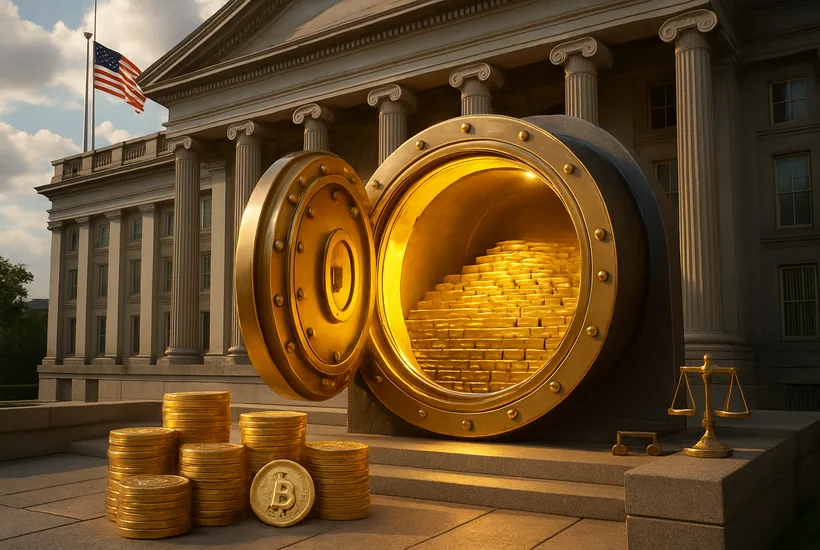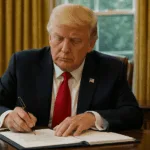- The U.S. Treasury is considering revaluing its gold reserves to generate liquidity for a strategic Bitcoin reserve.
- The proposed move has gained support from political figures like Senator Cynthia Lummis and Donald Trump, alongside analysts like Tom Lee.
- Treasury Secretary Scott Bessent has opposed the idea, citing potential risks to monetary policy and inflation.
The U.S. Treasury’s gold reserves, which are officially valued at $11 billion but have a current market value exceeding $750 billion, have recently become the subject of a Federal Reserve report. This report explores the possibility of revaluing these gold holdings to fund a new Bitcoin reserve strategy. The proposed plan involves adjusting the value of the gold assets through accounting measures, allowing the Treasury to issue new gold certificates at the higher market price and transfer the assets to the Federal Reserve. This approach would generate liquidity without selling the physical gold or expanding the monetary supply, similar to strategies employed by other countries in the past.
Support and opposition to the proposal
The initiative has received backing from key political figures, including Republican Senator Cynthia Lummis and former President Donald Trump. Both have publicly supported the idea of using the revaluation of gold reserves to fund a national digital asset strategy, specifically focusing on Bitcoin. Proponents argue that this would position the U.S. to build a sovereign digital asset reserve, in line with global trends where countries such as Indonesia and Brazil are exploring Bitcoin inclusion in their national reserves. Analysts like Tom Lee have even suggested that Bitcoin could replace gold as a modern store of value.
Newsletter
Get weekly updates on the newest crypto stories, case studies and tips right in your mailbox.
However, the proposal has faced significant resistance. Treasury Secretary Scott Bessent has firmly ruled out the revaluation of gold reserves, stating that it is not under consideration by the Treasury. Critics argue that such a move could distort monetary policy, trigger inflationary pressures, and undermine the independence of the Federal Reserve. The historical precedent of the 1934 gold revaluation raises concerns about potential political interference and the destabilizing effects of such an action.
Growing interest in digital assets in monetary policy
The Federal Reserve’s research on this concept signals a growing academic and institutional interest in exploring the role of digital assets in global monetary policy. While no immediate actions are expected, the investigation indicates that policymakers and financial institutions are beginning to reassess how the U.S. can utilize its gold holdings in an evolving financial landscape, especially as digital assets like Bitcoin gain prominence.
 Nazia Saeed
Nazia Saeed









